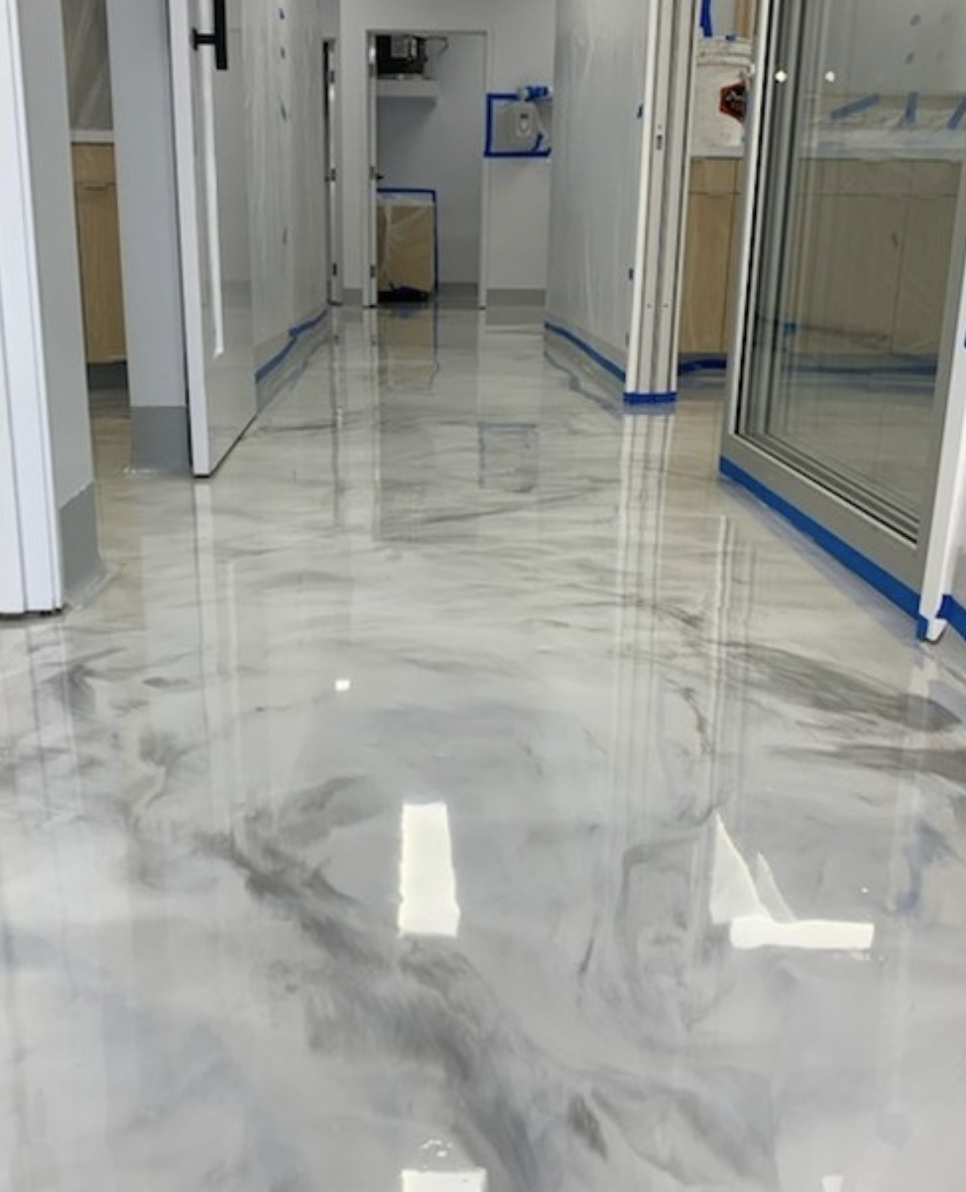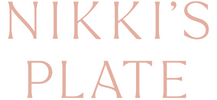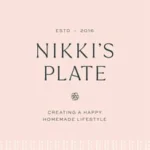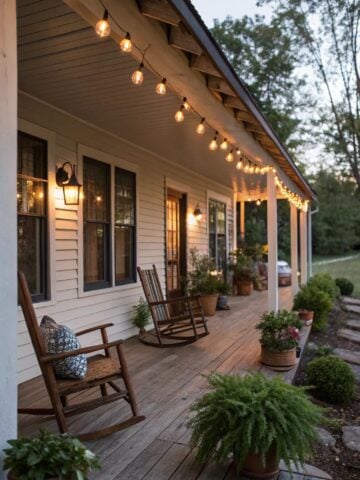Discover the latest epoxy resin trends—from metallic swirls and glow-in-the-dark designs to eco-friendly materials and layered art.

Disclaimer: this post may contain affiliate links, and every purchase made through these links will give me a small commission (at absolutely no extra cost for you!) AS AN AMAZON ASSOCIATE AND REWARDSTYLE MEMBER, I EARN FROM QUALIFYING PURCHASES. See Privacy Policy for additional info.
Epoxy resin has carved out a niche for itself in the design industry, notably for making one-of-a-kind tables, sculptures, and surfaces that tell a story while being useful. It's not only about how bright or long-lasting something is anymore. Now, it's a space where light, movement, and texture come together in ways that are surprising.
People are becoming more interested in techniques that push the limits of materials, including shimmering metallic rivers and illuminating designs that come to life at night. These new styles give builders, artists, and anyone else who wants to add individuality to a space a new way to do things.
If you’re exploring this space or simply looking for inspiration, ThunderWood Studio is a good place to see how these new directions are being brought to life in actual pieces.
Metallic Swirls That Catch the Eye
Metallic paints are one of the most talked-about methods right now. These are fine particles, usually formed of mica or metal oxide, that are added to resin to make it look like it is shimmering. Before the resin cures, artists utilize instruments like spatulas or heat guns to move the swirls around.
The result? Patterns that seem to move depending on where you’re standing. It’s like watching light shift on water.
These swirls aren't just for show. They help make things like countertops, wall panels, and tables into discussion starters. Depending on the colors used, they might look sleek and beautiful or rough and tough. Modern interiors look good with silver and steel colors, while gold, bronze, or deep copper offer warmth.
Glow-in-the-Dark Resin: Subtle by Day, Radiant by Night
Phosphorescent resin is another fad among artists. It's resin mixed with powder that glows in the dark. When the lights go out, the sculpture starts to illuminate. It is a kind of enchantment that doesn't make any noise.
This strategy is so appealing because it has an element of surprise. The table looks calm and rustic during the day, but at night it may glow with calming colors like green, blue, or purple.
This trend works especially well in:
- Garden or patio furniture, where soft illumination adds charm,
- Children's décor—stars, moon shapes, hidden paths,
- Resin “river” tables where the glowing pigment flows between wood slabs.
The trick is layering: some makers tuck the glow pigment underneath a clear coat, so it appears only when needed. Others go bold and let the pigment show through even in daylight.
UV-Reactive Designs That Shift With the Light
Resin that glows in the dark stores light energy and then lets it go. UV-reactive resin, on the other hand, changes color right away when it comes into contact with ultraviolet light, such sunlight or blacklight. These pigments change color when they are exposed to light.
Furniture made with this resin looks one way indoors and completely different once taken outside. You might see a table turn from pale gray to violet within minutes in the sun.
People are using this for outdoor signs, bar tops, or just as a fun hidden detail. There’s something satisfying about owning a piece that feels like it has two personalities.
Layered Resin That Adds Visual Depth
A technique gaining ground, especially among artists, is multi-layer resin pouring. Instead of a single pour, the resin is poured in stages. You can paint details, add tiny items, or give each layer a texture.The goal is to make it look like you're peering into a miniature world that has stopped moving.
For example, some people use this technology to make koi ponds with water lilies and fish that look like they're swimming just below the surface. Some people make scenes of forests, galaxies, or even abstract things that are floating at varying depths.
This process takes a while because the layers need to dry before the next one can be added, but the finished product looks and feels like it's alive and three-dimensional.
Nature Meets Resin: Using Organic Materials
Resin feels smooth and clean, but a lot of designers are mixing it with rough, raw materials to make it stand out. You might use dried flowers, moss, shells, driftwood, or even minerals.
Putting organic objects in resin retains them in their natural state and gives them structure, which makes them live longer. Some artists use their art to tell memories, such utilizing sand and shells to commemorate a day at the beach or putting seasonal flowers on a tray or table.
A lot of the time, these pieces have a calm, grounded sense. They combine the imperfect world of nature with the perfect world of man.
Crystals, Geodes, and Faux Gemstones
Making things that seem like geodes or crystal slices is a trend that has been growing over the past several years. These pieces look like the complicated shapes you would find in nature because they use a mix of glitter, pigment, shattered glass, and layering.
People are making wall art, clocks, and even whole tabletops this way. Some seem like actual stones, such amethyst or agate. Some people go all out with their imaginations, using bright colors and patterns that look like they sprang from a magical world.
This trend leans into boldness. It’s less about subtlety and more about texture, sparkle, and visual impact.
The Simplicity of Clear Resin
Not every new direction involves pigments or additives. In fact, minimalist clear resin is making its mark as well.
You can attract attention to shape, texture, and negative space by pouring transparent resin over a simple object, like a dried fern, a feather, or even a metal sculpture. The resin preserves and raises the thing without making it too heavy.
These pieces go nicely with modern decor, especially when they are paired with clean lines and neutral colors. Sometimes, little is really more.
A Shift Toward Eco-Friendlier Options
Some producers are starting to concern how epoxy impacts the environment as it grows increasingly common. Some kinds of traditional resin can let VOCs (volatile organic compounds) into the air.
This has led to more people being interested in bio-based resins or ones that are less toxic. Some artists may use leftover resin to manufacture small objects like accessories, tiles, or textured backgrounds. This helps the environment and offers rubbish a second chance.
It's a little but important alteration. You can be creative and care about the world at the same time.
Final Thoughts on Epoxy Resin Trends
Epoxy resin is exciting right now because it lets you express yourself in so many ways. It can be loud or quiet, grounded or futuristic, fun or classy. The most recent trends illustrate that there isn't just one way to go; instead, everyone is interested in pushing the limits of what can be done.
ThunderWood Studio is a fantastic example of where imagination and skill come together in real-world projects.









Leave a Reply